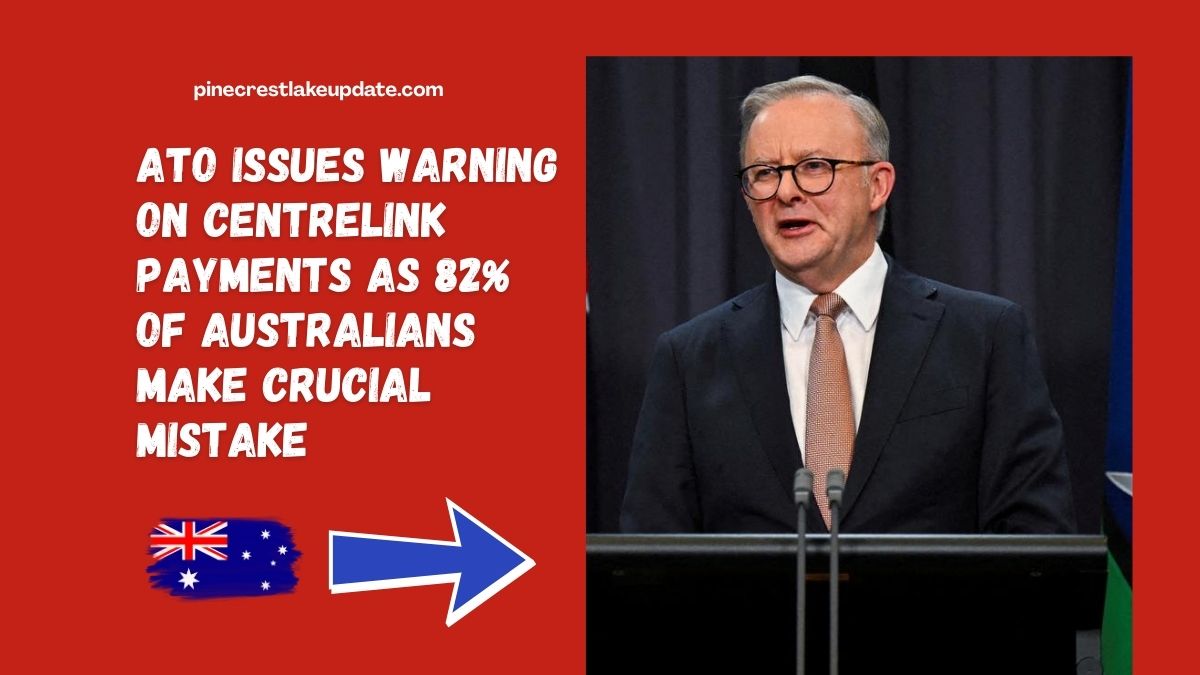The Australian Taxation Office (ATO) has issued a cautionary reminder for businesses to report natural disaster payments correctly if they received financial support from Services Australia this year.
With severe flooding affecting multiple regions of the country, various forms of disaster relief payments have been distributed.
These payments are a form of government assistance, and the ATO is emphasizing that they still count as assessable income for tax purposes.
Importance of Accurate Reporting
Despite the Centrelink-funded cash boost coming from a government agency, the ATO clarified that these funds must be reported on your tax return.
Recent surveys conducted by the ATO revealed that a significant 82% of business owners failed to report these payments accurately.
“The determination of whether these payments need to be reported depends on the type of support received,” the ATO stated.
Types of Payments That Don’t Need to Be Reported
Not all disaster relief payments are subject to tax, and there is a short list of those that do not need to be included in your tax return. These payments, which are not taxable, include:
- Cyclone Seroja (April 2021)
- 2021 Storms and Floods Recovery Grant
- 2019–2020 Bushfires Relief Recovery Payment
- 2019 North Queensland Floods Recovery Grants
- 2019 Restocking, Replanting, or Farm Infrastructure Grants
Therefore, if you received payments related to other disasters, such as Ex-Tropical Cyclone Alfred, you must include these in your tax return as they form part of your assessable income.
Claiming Deductions on Disaster Payments
The ATO mentioned that businesses can claim a deduction on these payments, but only under specific circumstances. The funds should be used for the following:
- Purchasing replacement trading stock or assets
- Repairing business premises and fittings
- Covering other business expenses
Additionally, if you received assistance payments from private sources, such as charitable groups or crowdfunding platforms, these too must be declared on your tax return.
Understanding Centrelink’s Natural Disaster Payments
Centrelink natural disaster payments can be quite confusing. According to Hank Jongen, a Services Australia spokesperson, many individuals were uncertain about the payments distributed after Cyclone Alfred.
To clarify, the Australian federal government, in collaboration with state and territory governments, distributes financial support under the Disaster Recovery Funding Arrangements (DRFA).
Types of Payments Available under DRFA
- Emergency/Personal Hardship Assistance Grants (NSW & Queensland): $180 for individuals, up to $900 for families to cover essential needs like food, clothing, and medicine.
- Essential Services Hardship Assistance (Queensland): $150 per person, with a maximum of $750 for larger families, to help with the immediate aftermath of losing essential services.
- Essential Household Contents Grants (Queensland): Up to $1,765 for individuals and $5,300 for couples or families to replace destroyed household contents.
- Structural Assistance Grants (Queensland): Up to $80,000 for uninsured owner-occupiers to repair or replace their homes, provided they meet income tests.
- Essential Services Safety and Reconnection Scheme (Queensland): Two parts; provides assistance for low-income, uninsured homeowners to restore services.
Additional Support Available
- Disaster Recovery Allowance (DRA): Offers up to 13 weeks of income support for individuals whose income was affected by the disaster. This is paid at either JobSeeker or Youth Allowance rates, based on individual circumstances.
- For JobSeeker recipients, the maximum payment is $1,011.50 per fortnight, totaling up to $6,574 over the full 13 weeks.
- Australian Government Disaster Recovery Payment (AGDRP): A one-off payment of $1,000 per adult and $400 per child for those significantly impacted by the disaster. This assistance applies if your principal residence was destroyed or severely damaged.
Tax Implications for Recipients of Disaster Assistance
If you received any form of disaster assistance, whether for the floods in Western Australia or following Cyclone Alfred, it is crucial that these payments are reported on your tax return.
Disaster Recovery Allowances and the Australian Government Disaster Recovery Payment are among the most common forms of assistance that must be included in your income declaration.
Key Points to Remember
| Payment Type | Reportable on Tax Return? | Eligible for Deduction? |
|---|---|---|
| Cyclone Seroja Recovery Payment | No | No |
| 2021 Storms and Floods Recovery Grant | No | No |
| 2019–2020 Bushfires Relief Payment | No | No |
| Cyclone Alfred Disaster Payment | Yes | Yes (under certain conditions) |
| Private Fund Assistance (Crowdfunding) | Yes | Yes |
The ATO stresses the importance of correctly reporting natural disaster payments as part of assessable income.
If you received such payments, you may be required to include them in your tax return, and you may also qualify for deductions if the funds were used to help rebuild or repair business assets.
Be sure to review the types of support you received and ensure your tax filings are accurate to avoid any issues.
FAQs
Do I need to report natural disaster payments on my tax return?
Yes, unless the payment is part of a specific exempted group like the Cyclone Seroja recovery grant.
Can I claim deductions for disaster assistance payments?
Yes, but only if the funds were used to repair or replace business assets or cover other business-related expenses.
Are disaster payments from private donations taxable?
Yes, payments received from private funds, including crowdfunding, must be declared on your tax return.
